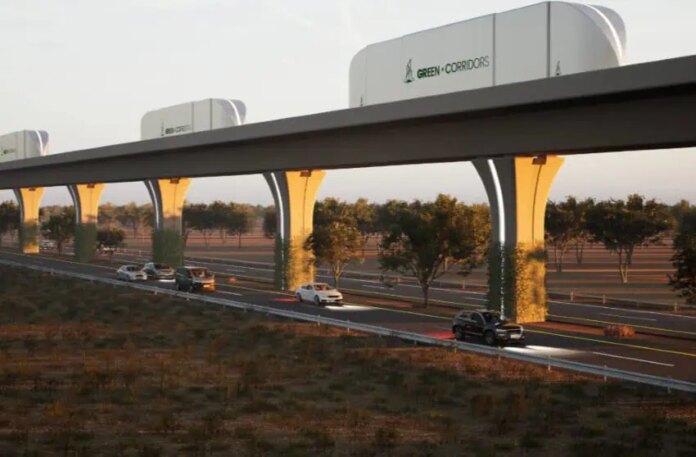Introduction to a Futuristic Freight Forwarding Infrastructure
A new and innovative form of freight forwarding infrastructure is being proposed to move cargo across the Mexico-United States border. This project, led by the startup company Green Corridors based in Texas, aims to build a 265-kilometer-long elevated guideway between Laredo, Texas, and Monterrey, Nuevo León. Autonomous freight-carrying shuttles would run along this guideway, revolutionizing the way goods are transported across the border.
The Project Details
The project, valued at $10 billion, has received a presidential permit from United States President Donald Trump. Green Corridors CEO Mitch Carlson has stated that the next step is to obtain the necessary construction and right-of-way permits on both sides of the border. The company is working closely with the Mexican federal and state government to acquire the concession agreement for the right-of-way for Highway 1 in the state of Nuevo León. Construction of the elevated guideway is expected to be completed in 2031, with a testing phase to follow.
Key Features of the Project
The elevated guideway will connect to two freight terminals in Laredo and two in Monterrey, each approximately 100 acres in size. Freight truck drivers will drop off their trailers at these terminals, which will then be loaded onto autonomous diesel-electric hybrid shuttles. These shuttles will travel along the designated path, similar to a monorail, and unload the trailers at the other end. The system is designed to have a maximum capacity of 10,000 trailers in each direction per day.
Benefits of the Elevated, Automated Corridor
The proposed system aims to improve security and efficiency at the busiest international trade corridor in North America. Currently, $320 billion worth of goods passes over the border between Laredo, Texas, and Nuevo Laredo, Tamaulipas, annually, with 70% of freight being transported by tractor-trailers that make 3.3 million crossings per year. These commercial vehicles face significant delays, which are costly and projected to worsen in the coming decades. The Green Corridors project offers a solution to this problem, providing a faster, more efficient, and environmentally friendly way to transport goods.
Environmental and Economic Benefits
The new freight transportation system will reduce emissions by 75%, providing a greener alternative to diesel trucking. It will also substantially reduce the overall cost of freight transportation compared to current market options. The system will include sustainable inland terminals equipped with solar arrays, regenerative cranes, and hybrid power. Additionally, it will integrate real-time monitoring, bi-national customs collaboration, and 100% freight screening, guaranteeing the secure and tamper-proof transport of goods.
The Bigger Picture
Mexico and the United States are each other’s largest trade partners, with two-way trade worth almost $840 billion last year. As export-focused companies continue to relocate to Mexico or expand their existing operations, demand for freight services to the United States will increase. The Green Corridors project will support the high levels of economic integration between Mexico and the United States, allowing companies to get their goods to consumers and each other more quickly and economically while reducing carbon emissions and pressure on border infrastructure.
Conclusion
The Green Corridors project has the potential to revolutionize the way goods are transported across the Mexico-United States border. With its innovative approach to freight forwarding, the project aims to improve security, efficiency, and environmental sustainability. As trade between the two countries continues to grow, the Green Corridors project will play a crucial role in supporting the economic integration of the region, providing a faster, more efficient, and environmentally friendly way to transport goods.

